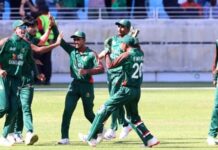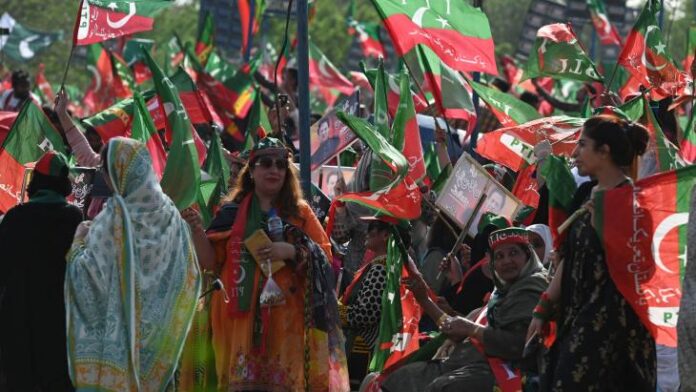On July 7, a three-member bench of the Supreme Court issued the detailed judgement on its earlier decision of declaring the arrest of the Chairman Pakistan Tehrik Insaf (PTI) unlawful from the premises of Islamabad High Court in the Al-Qadir Trust case on May 9.
The three-member bench comprised Chief Justice of Pakistan, Mr Justice Umar Ata Bandial, Mr Justice Muhammad Ali Mazhar and Mr Justice Athar Minallah. The bench had issued the short order on May 11. The detailed decision on July 7 focused on the mode and manner in which the Pakistan Rangers executed the arrest warrant (which had been issued on May 1) by breaking the door, glass partitions and windows of the biometric verification room.
The SC’s decision, which is now a public document, is a chargesheet against three authorities: The DG NAB, the DG Rangers and the CJ IHC. Either they must justify their positions or they must resign from their posts. The DG NAB and the DG Rangers violated the well-settled principle of law and triggered May 9 events. The CJ IHC overlooked the well-settled principle of law and declared the arrest legal to support the otherwise unlawful acts of the DG NAB and DG Rangers
To elaborate, on the fateful day of May 9, the DG National Accountability Bureau (NAB) sought the help of the DG Rangers to arrest the Chairman PTI. The Rangers arrested the PTI Chairman from the Court’s premises, before he could present himself before the Court. This blunder alone cost the country the events of May 9 when the PTI workers turned violent. Nevertheless, the same desperation opened space for the SC to renounce the arrest.
The SC’s decision of July 7 to declare the arrest of the PTI Chairman on May 9 unlawful automatically extends some credence to the agitation of the PTI workers. That is, on May 9, the PTI workers also agitated against the unlawful arrest of the PTI Chairman. The decision (and the extension of its meaning) undermines several stances of the DG ISPR, the mouthpiece of the military, which he uttered on June 26.
If the DG ISPR says that May 9 was Pakistan’s 9/11, the SC’s decision implies that the Rangers adopted an erroneous course which provoked the PTI workers into agitation which culminated in ferocity and arson If the DG ISPR says that May 9 was pre-planned (and that there existed a mastermind), the SC’s decision implies that the Rangers were part of the pre-planning to provoke the PTI workers into violence and incendiarism. If the DG ISPR says that perpetrators of May 9 including the mastermind will be tried in the Army courts, the SC’s decision implies that the Rangers took a wrong decision but the price of the consequent events is being paid by the PTI workers.
The broader question is this: In light of the SC’s decision of July 7, how can the Rangers be exonerated from inciting May 9 which caused massive damage to properties of both civilians and the Army. On June 26, the DG ISPR was emotive enough to describe properties as installations. He had lost the sense of distinction.
In paragraph 8 of the factual background, the SC’s decision of July 7 also asserted that the PTI Chairman was ignorant of the happenings of May 9. This single sentence exonerates the PTI Chairman from being called or considered the main perpetrator of May 9. Even if he were considered a mastermind, the unlawful act of the Rangers on May 9 to arrest him would be the prime instigator of triggering the events afterwards.
In a way, the SC’s decision shifts the prime responsibility of May 9 onto the Rangers, which arrested the PTI Chairman at the behest of the NAB. That is, the NAB prompted the Rangers to take an illegal action against the PTI Chairman. The action cost this country enormously in terms of destruction of the properties of both civilians and the Army. The SC’s decision also implies that the in-charge of the NAB and the Rangers are also culprits, whose miscalculated acts caused the destruction of properties. That is, do arrest the PTI workers who turned a legitimate demonstration into illegitimate plunder, but also punish the DG Rangers and DG NAB for not knowing the law and for violating the laid-down procedures while arresting the PTI Chairman from the premises of the IHC. Interestingly, if the DG ISPR is still interested in proceeding with his resolve to try the PTI workers in the Army courts, the list of eligibility starts from DG NAB and DG Rangers.
The SC’s decision of July 7 also poses a challenge to the legal expertise of the Chief Justice of the IHC, Mr Justice Aamer Farooq, who had declared the arrest legal. He did not know that no person could be arrested from within the premises of a court before hearing.
The decision says: “It is a well-settled principle that the dignity, sanctity and safety of the courts for the benefit of all concerned stakeholders are inviolable and cannot be compromised. This is because courts of law are sanctuaries which the people approach to seek justice with the assurance that they will be able to pursue their relief freely in a safe, orderly and dignified environment. The breech of this assurance undermines the effective dispensation of justice by deterring people from seeking the resolution of their disputes from the courts. Therefore, to safeguards the people’s right to access the Superior Courts and accordingly to seek justice, Article 204 of the Constitution has conferred this Court (and the High Courts) with the power to punish any person interfering with or obstructing the process of the Superior Courts in any way or prejudicing the determination of a matter pending before them.”
The paragraph appeals to common sense. The question is this: when this is a well-settled principle and when the principle is supported by Article 204 of the Constitution (describing the Contempt of Court), why was the DG NAB (who had a team of lawyers under his office) ignorant of it? Similarly, why did the DG Rangers prefer to violate the well-settled principle of law? Moreover, why was the CJ IHC ignorant of the well-settled principle and the attendant description of Article 204 of the Constitution?
In fact, the SC’s decision, which is now a public document, is a chargesheet against three authorities: The DG NAB, the DG Rangers and the CJ IHC. Either they must justify their positions or they must resign from their posts. The DG NAB and the DG Rangers violated the well-settled principle of law and triggered May 9 events. The CJ IHC overlooked the well-settled principle of law and declared the arrest legal to support the otherwise unlawful acts of the DG NAB and DG Rangers.
Now the question is this: where lies the PTI’s future? The answer is this: in the SC’s verdict of July 7.























